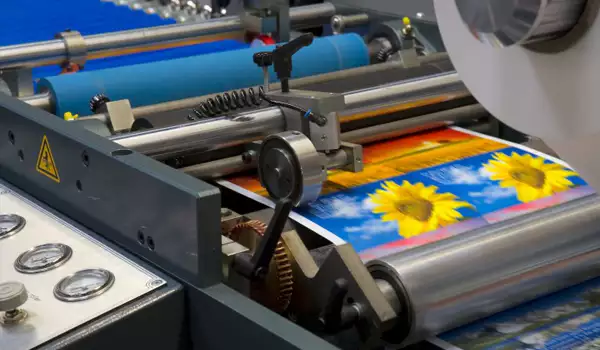RTO for Offset Printing
Offset printing is one of the most widely used printing techniques in the world. However, it can have negative environmental impacts due to volatile organic compounds (VOCs) emitted during the printing process. That¡¯s where regenerative thermal oxidizers (RTOs) come in. In this article, we¡¯ll explore how RTOs are used in offset printing to reduce VOC emissions and the benefits of using RTOs over other abatement technologies.
RTO의 작동 방식
RTOs are used to control VOC emissions in a variety of industries, including offset printing. RTOs work by heating VOC-laden air to a high temperature, which breaks down the VOCs into carbon dioxide and water vapor. RTOs are designed to capture and reuse the heat generated during the oxidation process, which makes them energy-efficient and cost-effective.
The Offset Printing Process
Offset printing is a process that uses printing plates, ink, and a rubber blanket to transfer an image onto paper. During the printing process, ink is transferred from the printing plates to the rubber blanket and then onto the paper. This process can produce VOCs, which are released into the air.
Benefits of Using RTOs in Offset Printing
Reduced Emissions
RTOs are highly effective at reducing VOC emissions. The high temperature at which RTOs operate ensures that VOCs are destroyed and not released into the atmosphere. This helps offset printers comply with environmental regulations and reduces their environmental footprint.
Cost-Effective
While RTOs may have higher capital costs compared to other abatement technologies, they are highly cost-effective in the long run. RTOs are energy-efficient and can be designed to capture and reuse the heat generated during the oxidation process, which reduces operating costs.
High Efficiency
RTOs are highly efficient at destroying VOCs. They are designed to operate continuously and can achieve destruction efficiencies of up to 99%. This makes RTOs a reliable and effective solution for offset printers looking to reduce their environmental impact.
결론
Overall, RTOs are a highly effective and cost-efficient solution for offset printers looking to reduce their environmental impact. By using RTOs, offset printers can comply with environmental regulations, reduce their environmental footprint, and operate more sustainably.


회사 소개
We are a high-tech enterprise specializing in the comprehensive treatment of volatile organic compounds (VOCs) and carbon reduction and energy-saving technology. Our core technologies include thermal energy, combustion, sealing, and automatic control. We have the ability to simulate temperature fields and air flow fields, model calculations, and perform experimental tests on the properties of ceramic heat storage materials, molecular sieve adsorbents, and high-temperature incineration and oxidation of VOCs. We have a RTO technology R&D center and waste gas carbon reduction engineering technology center in Xi’an, and a 30,000 square meter production base in Yangling. We are a leading manufacturer of RTO equipment and molecular sieve rotary equipment worldwide. Our core technical team comes from the Aerospace Liquid Rocket Engine Research Institute (Aerospace Sixth Institute). We have more than 360 employees, including more than 60 R&D technology backbones, including 3 chief engineers, 6 senior engineers, and 47 thermodynamics doctors.
인증, 특허 및 영예
Our company has obtained the knowledge management system certification, quality management system certification, environmental management system certification, construction industry enterprise qualification, high-tech enterprise, rotary valve patent for regenerative thermal oxidation furnaces, rotary blade heat storage incineration device patent, and disc-type molecular sieve rotary patent, etc. (insert image here)

How to Choose the Right RTO Equipment
- Determine the characteristics of waste gas
- Understand the local regulations and emission standards set
- 에너지 효율성 평가
- 운영 및 유지 관리를 고려하세요
- Budget and cost analysis
- Choose the right type of RTO
- 환경 및 안전 요소를 고려하세요
- Performance testing and verification
When choosing RTO equipment, it is important to first determine the characteristics of the waste gas to be treated. Then, it is necessary to understand the local regulations and emission standards set to ensure compliance. It is also important to evaluate energy efficiency, consider operation and maintenance, and budget and cost analysis. The right type of RTO should be chosen based on these factors, while also considering environmental and safety factors. Finally, performance testing and verification should be conducted to ensure the effectiveness of the equipment (insert image here).

Our Service Process
- 초기 상담, 현장 검사 및 요구 분석
- Solution design, simulation and review
- 맞춤형 생산, 품질 관리 및 공장 테스트
- 현장 설치, 시운전 및 교육 서비스
- 정기적인 유지관리, 기술지원, 예비부품 공급
Our service process involves an initial consultation, on-site inspection, and needs analysis to determine the best solution for the customer. We then design and simulate the solution, and conduct a review to ensure it meets the needs of the customer. Customized production, quality control, and factory testing are then conducted to ensure the highest quality. We provide on-site installation, commissioning, and training services to ensure the equipment is properly installed and operating effectively. Finally, we offer regular maintenance, technical support, and spare parts supply to ensure long-term success (insert promotional text here).
We are a one-stop solution provider with a professional team that can tailor RTO solutions to meet the specific needs of our customers.
